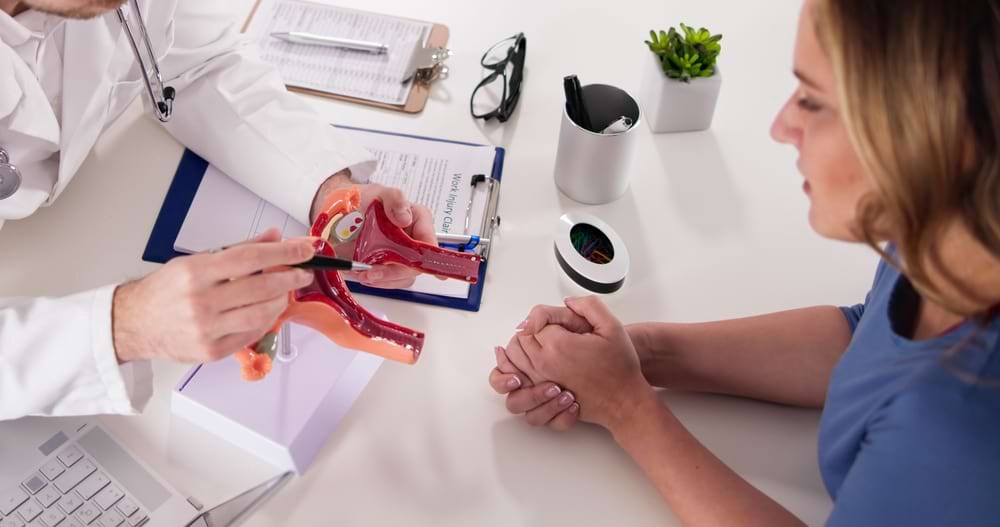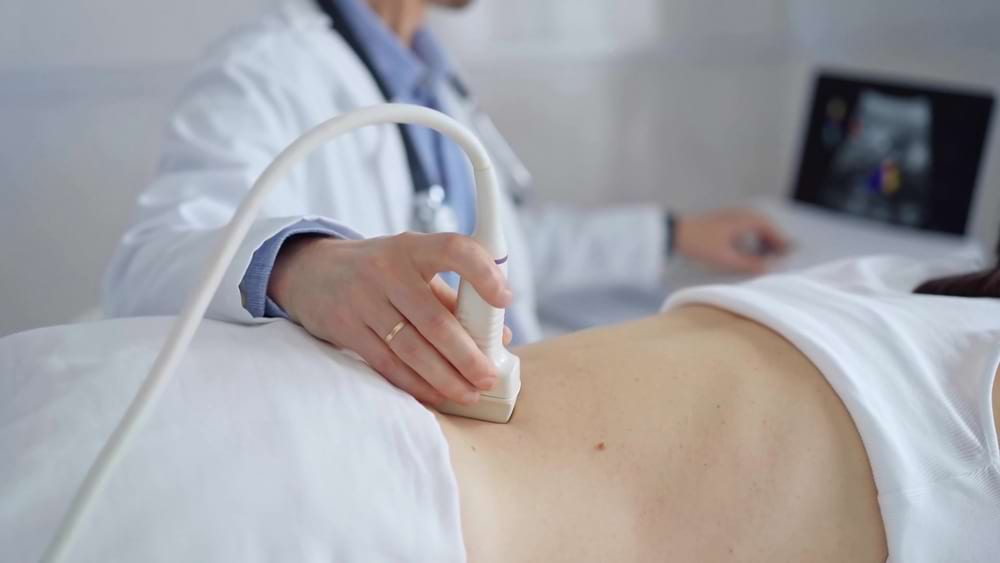Uterine Fibroid Embolization vs. Endometrial Ablation: Which Is Best?

Have you been dealing with heavy bleeding, pelvic pain, and the frustrating cycle of missed workdays and canceled plans? Maybe your doctor has mentioned uterine fibroids, but you’re not sure what that means for your health—or your options.
Two common fibroid treatment options you might have heard about are uterine fibroid embolization (UFE) and endometrial ablation. While both procedures are minimally invasive, they serve very different purposes. This blog will break down how each works, who they’re best suited for, and what you need to consider when making a decision.
By the end, you’ll have a clear understanding of UFE vs. endometrial ablation—and which one could help you take back control of your health.
Defining UFE and Endometrial Ablation
At first glance, uterine fibroid embolization (UFE) and endometrial ablation might seem like similar procedures since both are minimally invasive and aim to reduce heavy bleeding. However, they work in different ways and have distinct effects on the uterine lining and overall health.
What is UFE?
Uterine fibroid embolization (UFE) is a minimally invasive procedure designed to treat uterine fibroids by cutting off their blood supply. As a result, fibroids gradually shrink without a steady supply of oxygen and nutrients, reducing fibroid symptoms like heavy bleeding, pelvic pain, and abdominal pressure. Unlike surgical options like hysterectomy or myomectomy, UFE keeps the uterus intact, making it a preferred choice for many women seeking symptom relief without major surgery.
What is Endometrial Ablation?
Endometrial ablation is a procedure that targets the uterine lining rather than the fibroid tissue itself. It uses various ablation methods:
- Radiofrequency energy
- Extreme cold
- Heated fluids
These destroy the uterine lining and reduce or stop heavy bleeding. Endometrial ablation doesn’t shrink or eliminate fibroids—it only addresses the bleeding caused by them, making it a less effective option for women with symptomatic uterine fibroids.
Comparing UFE vs. Endometrial Ablation
While both UFE and endometrial ablation aim to reduce heavy bleeding, they don’t work the same way—and they don’t offer the same long-term results. Choosing the right treatment depends on the size, location, and severity of your uterine fibroids, as well as your future health goals. To help you make an informed decision, let’s break down how UFE and endometrial ablation compare.
Procedure
UFE
During a UFE procedure, a fibroid specialist inserts a tiny catheter into the groin or wrist arteries and guides it to the uterine arteries. The specialist uses real-time imaging to release small particles that block the blood supply to the uterine fibroids and cause them to shrink over time.
The procedure typically takes 60 to 90 minutes and only takes local anesthesia and light sedation. It’s a minimally invasive procedure, so there are no large incisions. It’s also performed as an outpatient procedure, meaning you can go home the same day.
Endometrial Ablation
Endometrial ablation is performed by inserting a thin device into the uterus to destroy the uterine lining using different ablation methods like radiofrequency energy, freezing, or heated fluids. Unlike uterine fibroid embolization, this procedure only addresses the symptom of heavy bleeding, not the fibroid tissue itself.
Endometrial ablation is also an outpatient procedure that typically takes about 30 minutes. Patients receive either local anesthesia or general anesthesia depending on the method used.
Recovery Time and Process
UFE
UFE fibroid embolization recovery is typically one to two weeks, and most women can return to light activities within a few days. Unlike surgical procedures, UFE does not require general anesthesia, extensive downtime, or hospital stays.
After the procedure, some women experience:
- Pelvic pain
- Abdominal pain
- Mild cramping
Thankfully, you can manage these symptoms with medication. Since fibroid embolization works by cutting off the blood flow to the fibroids, the body gradually absorbs the fibroid tissue. Patients enjoy a steady improvement of symptoms over the next few months.
Endometrial Ablation
Most women resume normal activities in a few days. Some may experience aftereffects for a few weeks. They may include:
- Cramping
- Pelvic pain
- Water discharge
- Spotting
However, endometrial ablation doesn’t shrink fibroids or treat uterine fibroids directly, so symptoms may return if your fibroids continue to grow and the procedure is not appropriate for multiple or large fibroids, or those located outside the area of the endometrium. While it can provide relief from heavy bleeding, it does not prevent new fibroids from developing, making it a less permanent solution for women with symptomatic fibroids.

Risks and Complications
UFE
While UFE is a minimally invasive procedure, some women experience pelvic pain, cramping, and nausea in the first few days following the procedure as the fibroid tissue begins to break down. In rare cases, this can cause infection or require additional treatment. There is also a small risk of menopause if the blood supply to the ovaries is affected, though this is uncommon in women under 45.
Endometrial Ablation
The risks of endometrial ablation vary depending on the ablation methods used, but potential complications include:
- Infection
- Uterine perforation
- Scarring of the uterine lining
This procedure may not provide long-term relief because fibroids can continue to grow and cause heavy bleeding to return. In some cases, endometrial ablation can lead to trapped menstrual blood and severe pelvic pain. Since it does not remove or shrink fibroids, it may not be the best option for women with symptomatic uterine fibroids looking for a lasting solution.
Impact on Menstrual Cycles and Fertility
UFE
Many women see a significant reduction in heavy bleeding after UFE, and some even experience lighter or irregular periods in the months following the procedure. However, UFE does not cause menopause, and most women maintain normal cycles.
Unlike endometrial ablation, uterine fibroid embolization keeps the uterus intact, so pregnancy is still possible after the procedure. Thousands of women have successfully conceived following UFE, but it’s important to discuss family planning with a fibroid specialist beforehand.
Endometrial Ablation
Endometrial ablation significantly impacts the uterine lining and often leads to lighter or absent periods. It is not an appropriate treatment for multiple or larger fibroids, or those which are located outside the endometrium. While some women still menstruate after the procedure, many enjoy reduced heavy bleeding long-term.
However, endometrial ablation is not recommended for women who want to become pregnant. The destruction of the uterine lining makes it difficult for an embryo to implant. If you do get pregnant, there is a high risk of complications such as uterine rupture and miscarriage.
Because of this, most doctors advise permanent birth control for women who undergo endometrial ablation.
Ideal Candidates
UFE
UFE is a great option for women who are:
- Want to treat fibroids while preserving their uterus.
- Experience heavy bleeding, pelvic pain, or pressure from fibroids.
- Prefer a minimally invasive treatment with a short recovery period.
- May still want the option to conceive.
Endometrial Ablation
On the other hand, endometrial ablation is best for women who:
- Have heavy bleeding but do not have large, multiple, or deeply embedded fibroids.
- Do not plan on future pregnancy
However, it is generally not recommended for women with symptomatic fibroids looking for a long-term solution. This is because it only removes the uterine lining and does not address the fibroid tissue.
Combining UFE and Endometrial Ablation
In some cases, doctors may recommend a combination of uterine fibroid embolization (UFE) and endometrial ablation for women experiencing both symptomatic fibroids and heavy menstrual bleeding that persists despite fibroid treatment.
While UFE effectively shrinks fibroids and alleviates symptoms such as pelvic pain and pressure. Endometrial ablation targets the uterine lining to reduce heavy bleeding but does not remove or shrink fibroids.
When used together, these two minimally invasive procedures can provide a dual approach:
- UFE treats the root cause—fibroids—by reducing their size and symptoms.
- Endometrial ablation helps control excessive menstrual bleeding in certain settings.
This combination approach may be considered for women with small or multiple fibroids contributing to abnormal bleeding and who are not planning future pregnancy. However, it is not a universal solution for all fibroid patients since the effectiveness of endometrial ablation depends on factors like fibroid size and location.
A consultation with a fibroid specialist is essential to determine whether combining UFE and endometrial ablation is an appropriate treatment option based on individual symptoms, fibroid characteristics, and overall uterine health.
Find the Right Fibroid Treatment at VIP Fibroid Center
Choosing between uterine fibroid embolization (UFE) and endometrial ablation is a personal decision. If you’re struggling with fibroid pain and heavy bleeding, the right treatment can provide long-term relief.
At VIP Fibroid Center, our board-certified fibroid specialists offer minimally invasive procedures that help you regain control of your health—without major surgery.
Contact VIP Fibroid Center today to schedule a consultation and explore your best treatment options!
